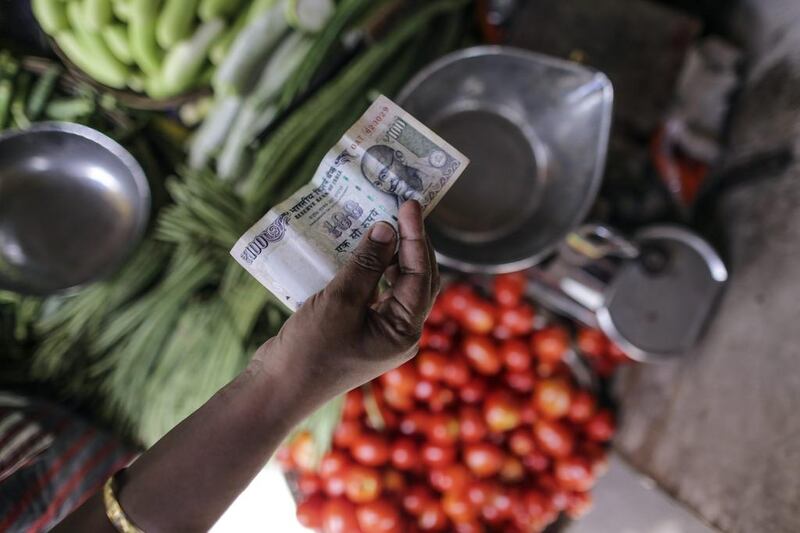MUMBAI // The Indian rupee, which has tumbled against the US dollar in recent weeks, is set for further volatility and could hit a new all-time low this year, analysts are forecasting.
The rupee yesterday traded as low as 66.79 against the dollar compared to 63.87 a month ago. It fell to a two-year low of 66.86 on Monday.
“Like most emerging markets and higher-yielding assets, the Indian rupee was hit particularly hard as a result of external factors, starting with the meltdown in China and further amplified by US Fed rate [hike] expectations and the volatility is expected to continue through September,” said Gaurav Kashyap, the head of futures at AxiTrader ME DMCC.
The currency hit a record low of 68.84 in August 2013.
Mr Kashyap said that for the rupee “a move towards 68, followed by 70 levels [is] likely through the last quarter of 2015”.
This comes as the Indian prime minister Narendra Modi yesterday met business leaders and top economists in New Delhi to discuss the impact of developments in the global economy on India.
The UAE dirham is pegged to the dollar, so any weakness against the US currency means that the each dirham buys more rupees, which has a positive impact on Indians in the UAE sending money back to their home country. The rupee yesterday traded above 18.13 to the dirham.
“It’s good news for Indian expats,” said Sudhesh Giriyan, the chief operating officer of Xpress Money, explaining the remittances company had seen a 20 per cent increase in remittances into India over the past month compared to the previous month.
“We have already seen a surge and this is definitely going to continue with a combination of festivals coming up and the rupee going down. There is no reason as to why the rupee should not reach the 67 level in the coming days.”
Stock markets in India have also fallen sharply as foreign institutional investors have pulled out funds, with the benchmark Bombay Stock Exchange Sensex on Monday closing at a 15- month low of 24,893.81.
It closed up 1.7 per cent at 25,317.57 yesterday.
Investor worries over GDP growth have also weighed on the rupee, according to ForexTime, a foreign exchange broker.
These fears were realised last week when official data revealed that India’s GDP growth in the second quarter slowed to 7 per cent, below widespread expectations for a figure of about 7.4 per cent.
TC Guruprasad, the managing director of Centrum Direct, a foreign exchange service provider based in Mumbai, said “the Indian rupee is still the least impacted currency in the depreciation volley seen as an aftermath of the Chinese yuan devaluation against the US dollar last month”.
“Given the scenario, the rupee definitely is under pressure for further depreciation,” he said.
But “macroeconomic factors” in India could help support the rupee, he added. India’s current account deficit has narrowed and inflation has come down compared to two years ago.
“The key drivers to the US dollar/Indian rupee movement would be the outcome of the Fed meeting scheduled for September 16-17 and its decision on a rate hike as well as the domestic data and market sentiments,” said Mr Guruprasad. “The rupee is expected to trade in the range of 66.30 to 66.90 in the near term.”
Following the devaluation of the Chinese yuan, “a weaker Indian rupee would actually benefit the country, making it more competitive in export markets”, said Mr Kashyap.
business@thenational.ae
Follow The National's Business section on Twitter





